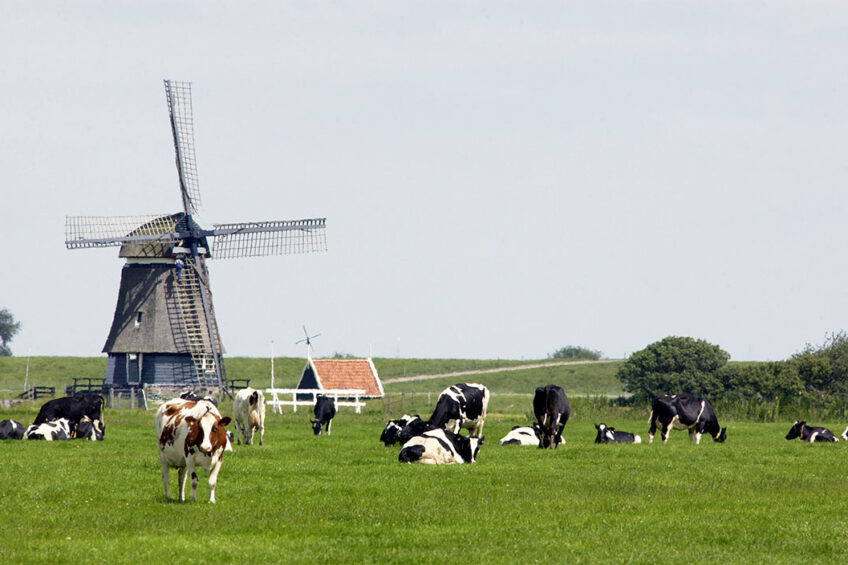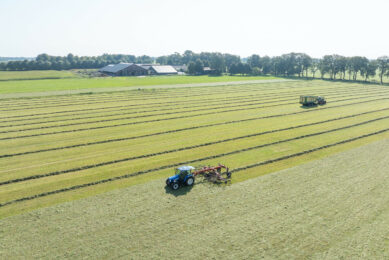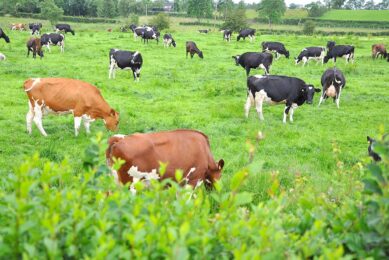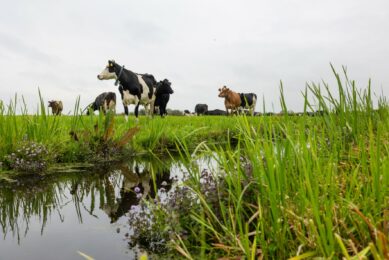EU Grassland-based dairy: Benefits, strategies, key points

Grassland-based dairy production provides multiple benefits to farmers and to the wider society, but the European grassland area is under threat as it has been significantly reduced during the last decades. The multiple benefits of grassland-based dairy production systems to society would be lost once grasslands are converted for other purposes.
In their study published in Irish Journal of Agricultural and Food Research (2021), researchers explore societal and economic options to support grassland-based dairy production in Europe. Several initiatives were discussed including treaties, grazing premiums, and grass-fed branding of products. The researchers of this study think if these initiatives are well implemented, most of the farmland abandonments observed especially in Europe’s marginal grasslands will significantly be reduced. Reports show that farm abandonments are mainly witnessed in the mountain farms that are often grassland-based systems, and the semi-arid areas in South Europe.

Benefits of grassland-based dairy
Besides grasslands playing a key role in human nutrition and food security, grassland-based dairy production systems deliver several other services to society. The services, as described by the Millennium Ecosystem Assessment report, includes the grasslands’ role on carbon sequestration, biodiversity, protection of soils against erosion, preservation of the aesthetic value of cultural landscapes and the traditional cultural heritage – an attractive feature for both tourists and the locals. Taking Netherlands as an example, the grazing dairy cow is seen as part of the cultural heritage of the Netherlands, and as a result, the Dutch society is continuously striving to maintain their dairy grasslands through several programs aiming at promoting grazing in dairy cows.
Treaties and premiums
Treaties and grazing premiums are key societal initiatives to stimulate grassland-based dairy production, as explained by the researchers of this study. This study reviewed that EU member states have different approaches to promoting grassland-based dairy production. The Netherlands, for example, provides grazing treaties and premiums. The grazing dairy cow is seen as part of the cultural heritage of the Netherlands. To preserve their cultural heritage and promote dairy grazing, in 2012 the Dutch society developed the ’Treaty on Grazing’. The Treaty, which aims to stabilise the percentage of farms that practise grazing, has been signed by more than 80 organisations involved in the dairy chain.
As part of the Treaty, a grazing premium is provided by the dairy industry to farmers who practise grazing of dairy cows for at least 120 days/year for at least 6 h/day. Like the Dutch, Germany dairies recently started promoting pasture milk by developing a label for pasture milk. The label developed in 2016 is called the ‘Grazing Charta’. Milk classified with this label comes from cows which graze on pasture for at least 120 days/year for at least 6 h/day.
In countries such as Spain, France and Belgium, premiums are paid to farmers in certain regions that practise grazing or maintain grasslands. In Portugal, a Carbon Fund was established; it pays farmers (as a premium) for delivering the ecosystem service, carbon sequestration.
The researchers wrapped up by highlighting that for an effective Treaty/Premium system, the authentication and traceability of the products from dairy grazing systems is important, to ensure recognisability and price acceptance by the consumers.
Influencing farmer mindset
“Farmers are key actors when it comes to maintaining and improving production systems since they decide on the day-to-day management of the farm. When developing stimulating initiatives, the mindset of the farmer should be considered and influenced,” they said. It was added that it is necessary to clearly show the importance of grassland-based dairy production system for society to the farmers (show the customer perspective) and to support this by valuing the products from these systems accordingly. In addition, continuous training of farmers on grassland management was identified as a sustainable tool for promoting grassland-based dairy production.
Implementing a low-cost strategy
If farmers are expected to further manage and maintain grasslands, it is an essential condition that they will have a reasonable income or costs of production. Nowadays, in many European countries, the application of the Common Agricultural Policy (CAP) results in subsidies promoting grassland-based systems (at the plot or farm level). These subsidies can be a major part of the farmers’ income, as a low-cost strategy. According to the researchers, a key factor affecting the economic sustainability of grassland-based dairy production is the proportion of grass in the diet. This was attributed to a Dutch study showing that grazing is financially attractive if the cows eat enough pasture grass (Figure 1). “National and EU policies could further support grassland-based systems by introducing specific incentives that aim at increasing the grassland area near the farm,” they added.
Figure 1 – High proportion of grass in the diet of dairy cows in different countries throughout the world corresponds to low total production costs. Source: Dillon et al., 2005.

The future of grazing
The researchers concluded that the future of grazing in Europe requires establishment of business models where farmers are rewarded for animal products or for societal demands/ecosystem services through subsidies and premiums. It was also stated that in the long-term grazing may have advantages in terms of sustainability, e.g., if energy prices increase in future, feeding based on mechanisation and concentrate import will be more expensive.
It was concluded that innovations in grassland management are continuously needed and are currently stimulated and promoted in regional, national, and European projects. The European project Inno4Grass is a clear example of an innovative project that aims to ensure the implementation of innovative systems on productive grasslands and to increase the profitability of European grassland farms and preserve environmental values. In this project, where 8 EU member countries participate, innovative grassland farmers receive international awards for their innovation and commitment to excellence in grassland. If more EU member countries would join, the better the future for grassland-based dairy in the EU. It is also mentioned that the end of the milk quota in the EU seem to discourage grazing; stimulation to graze will be needed through legislation, research, and innovation.










